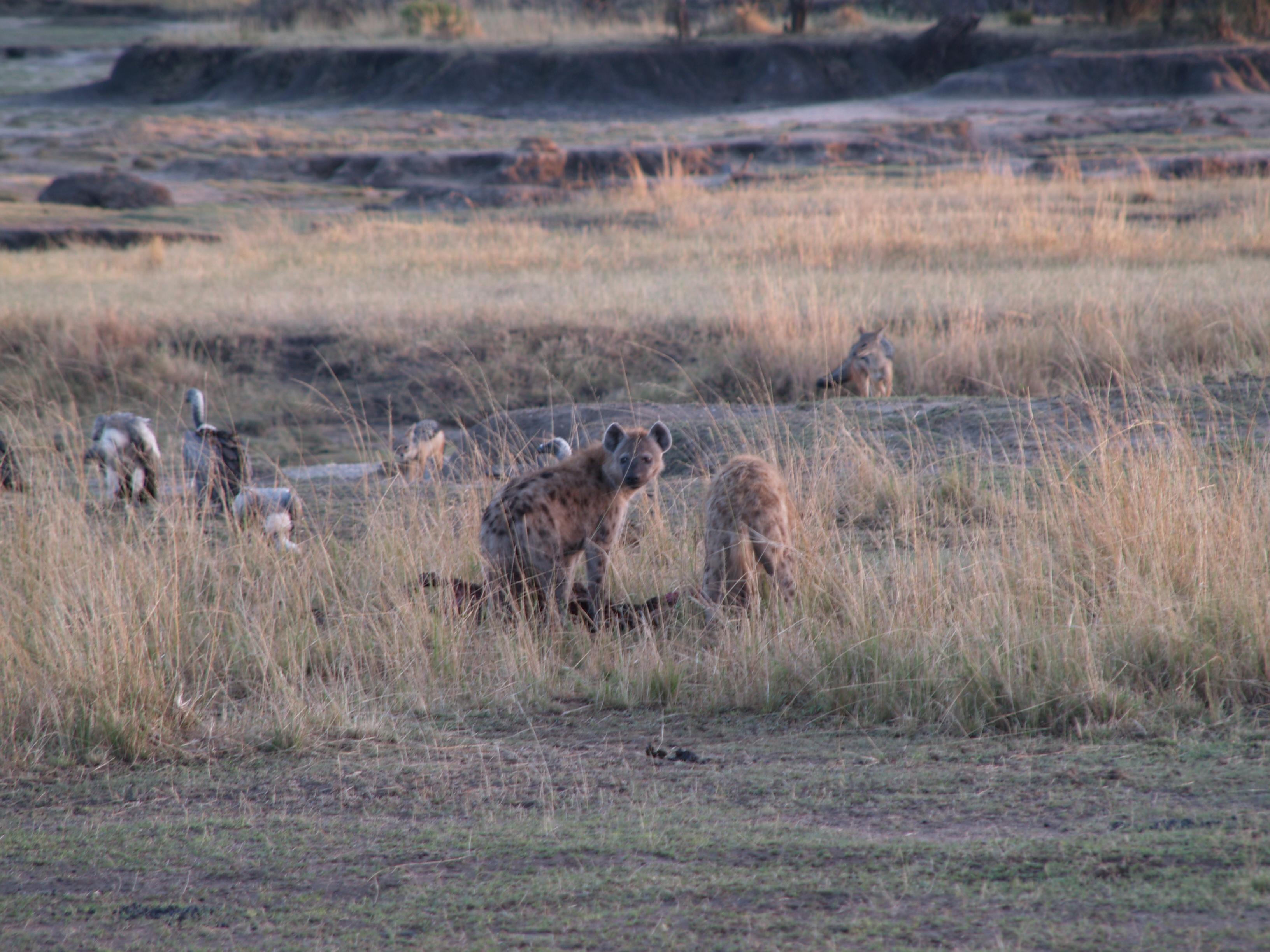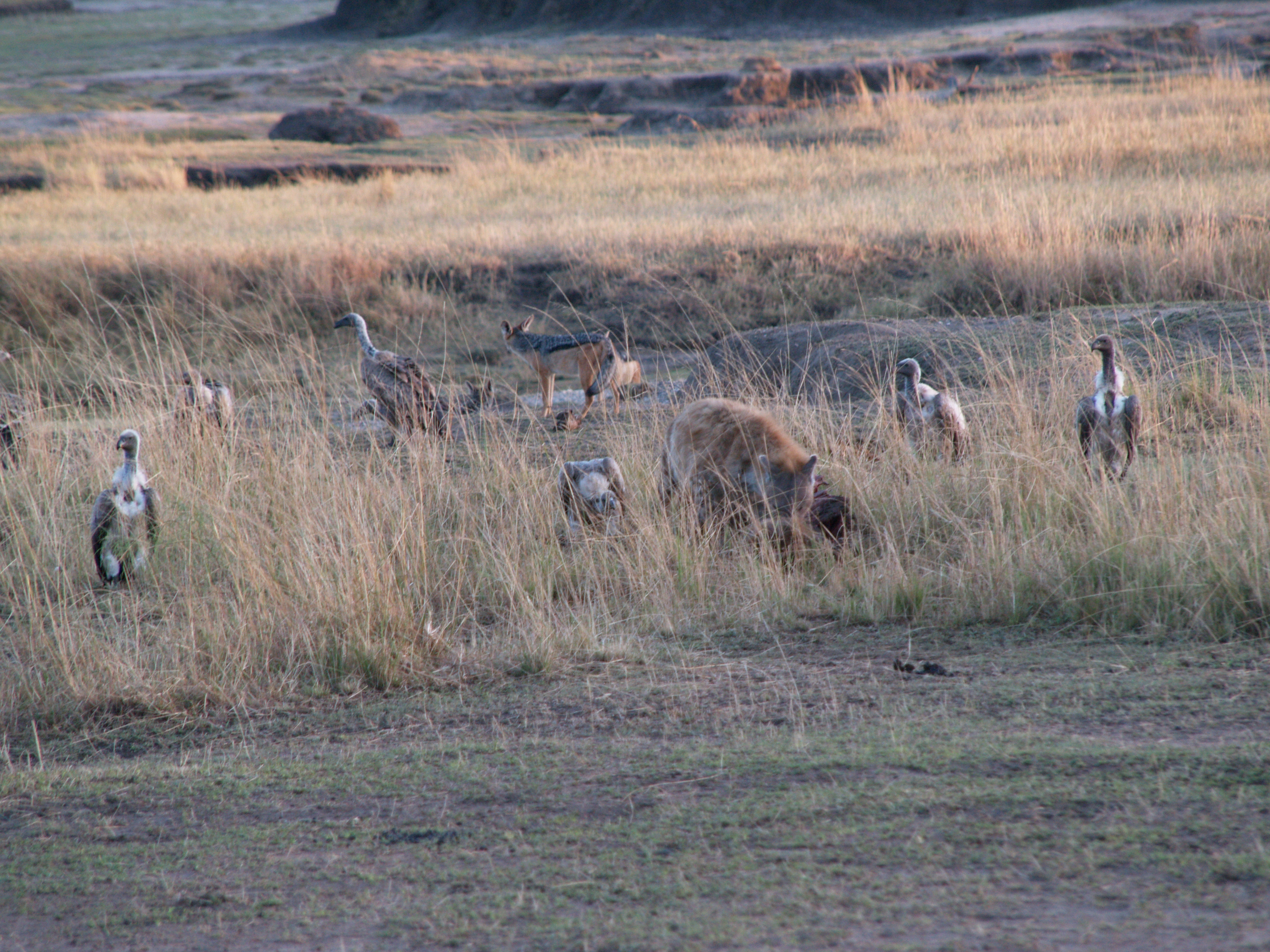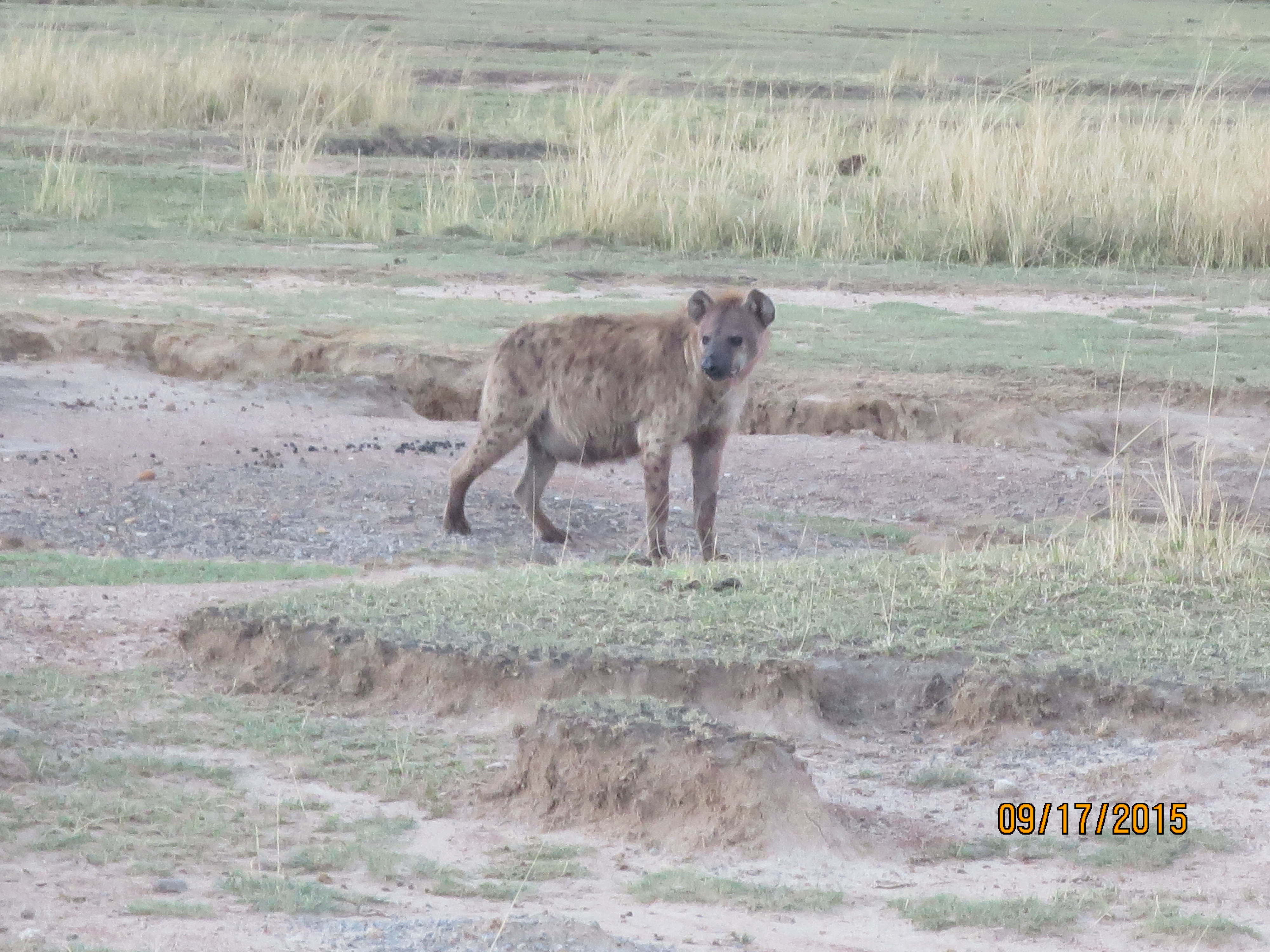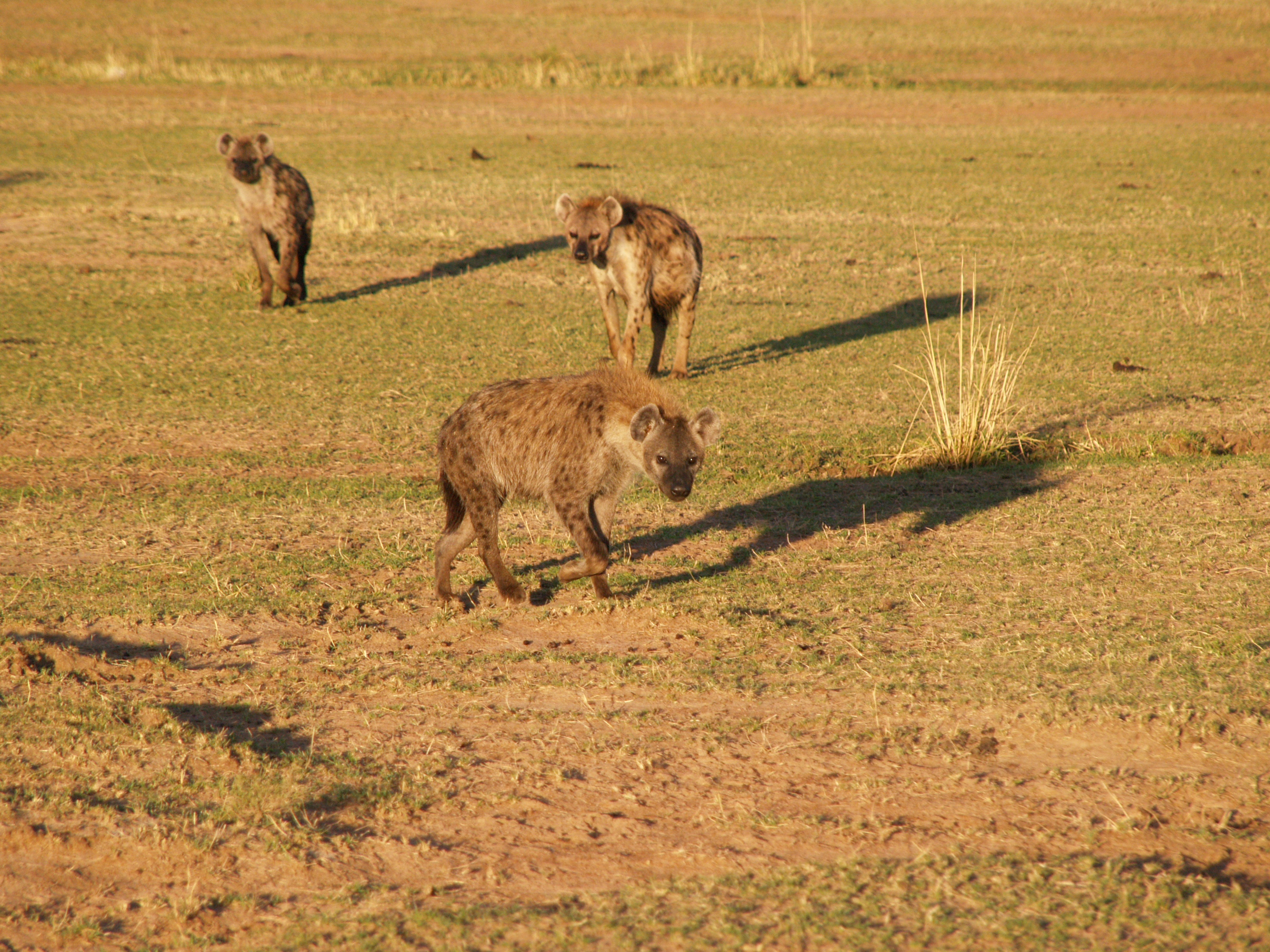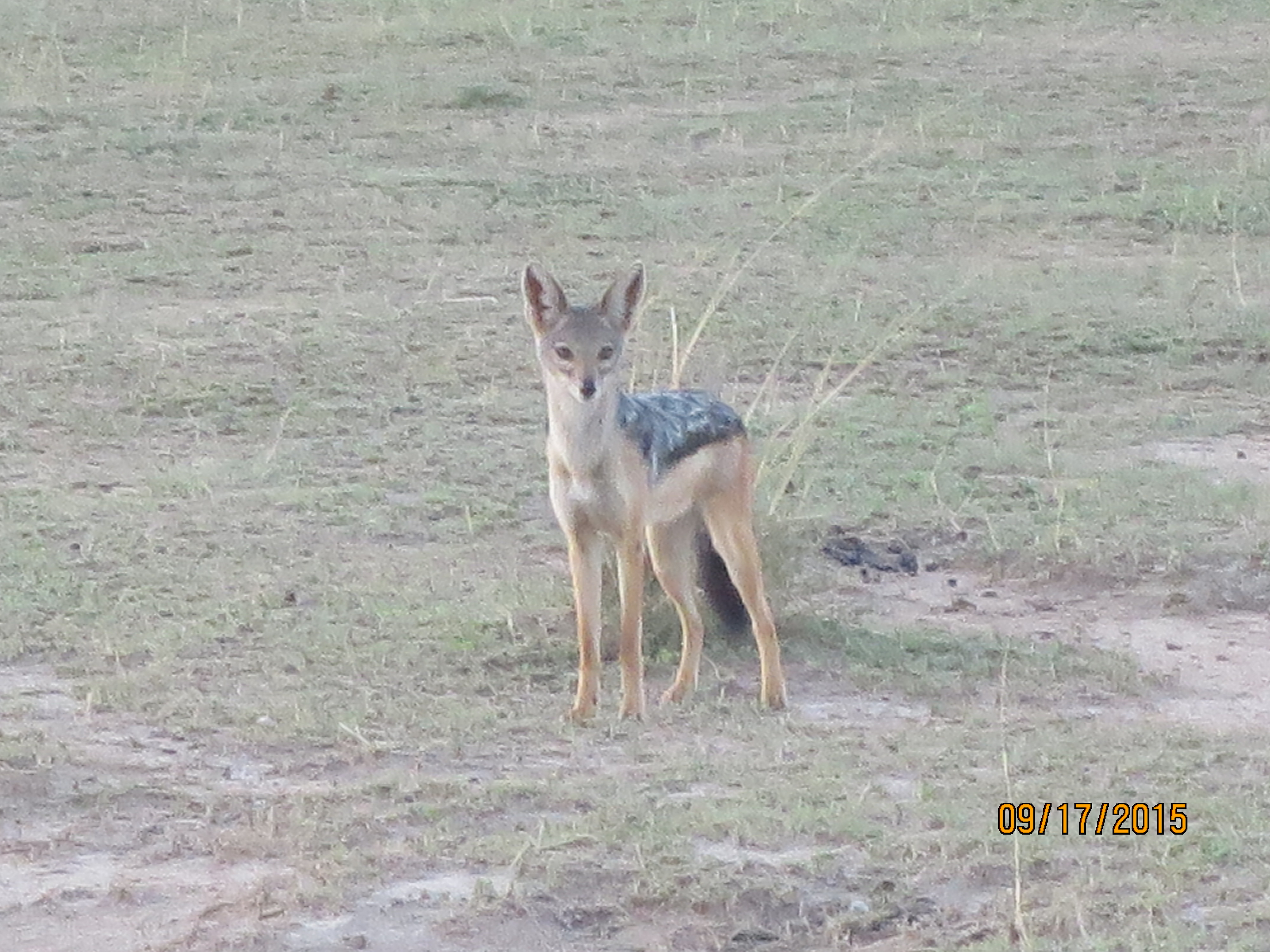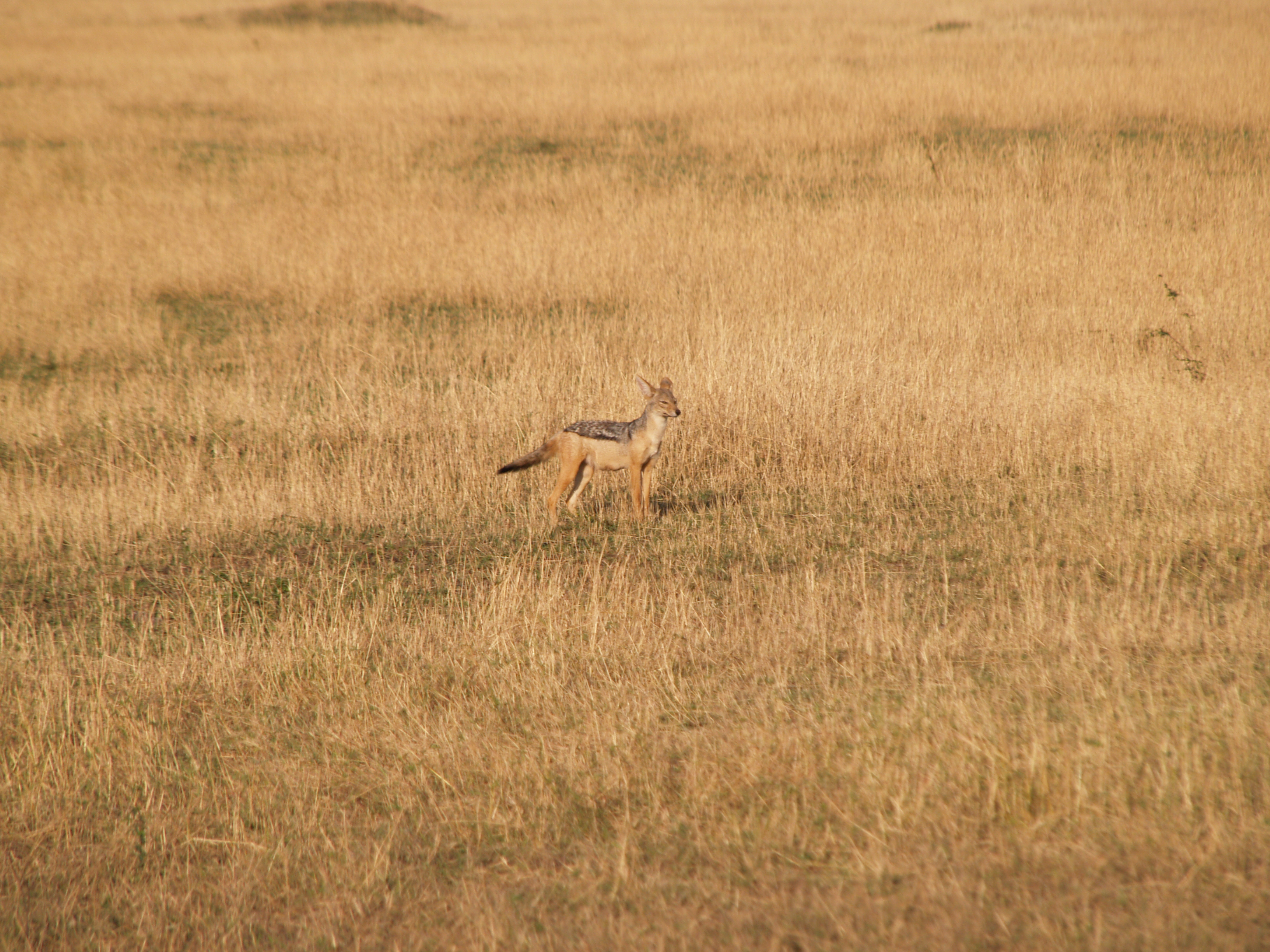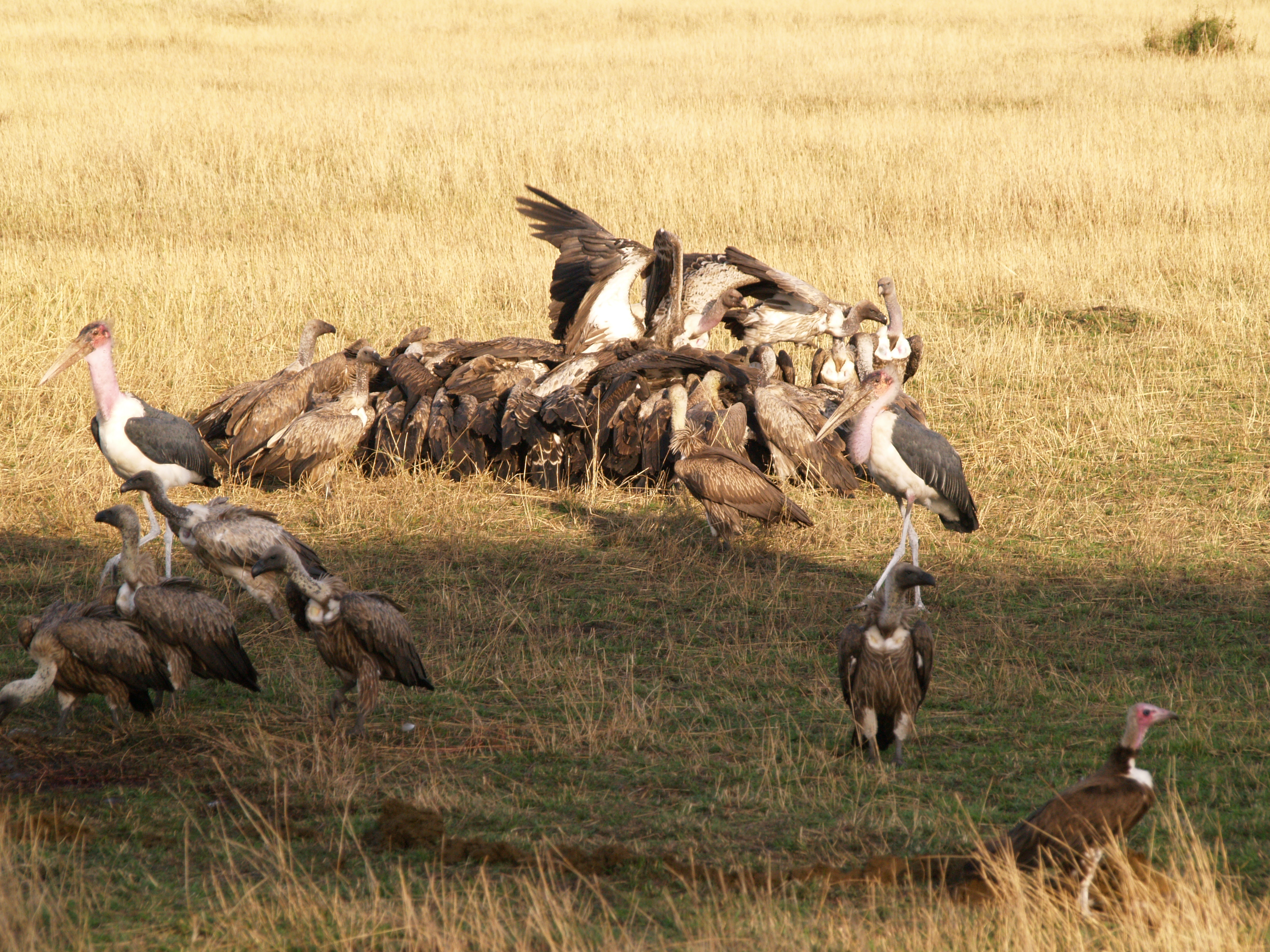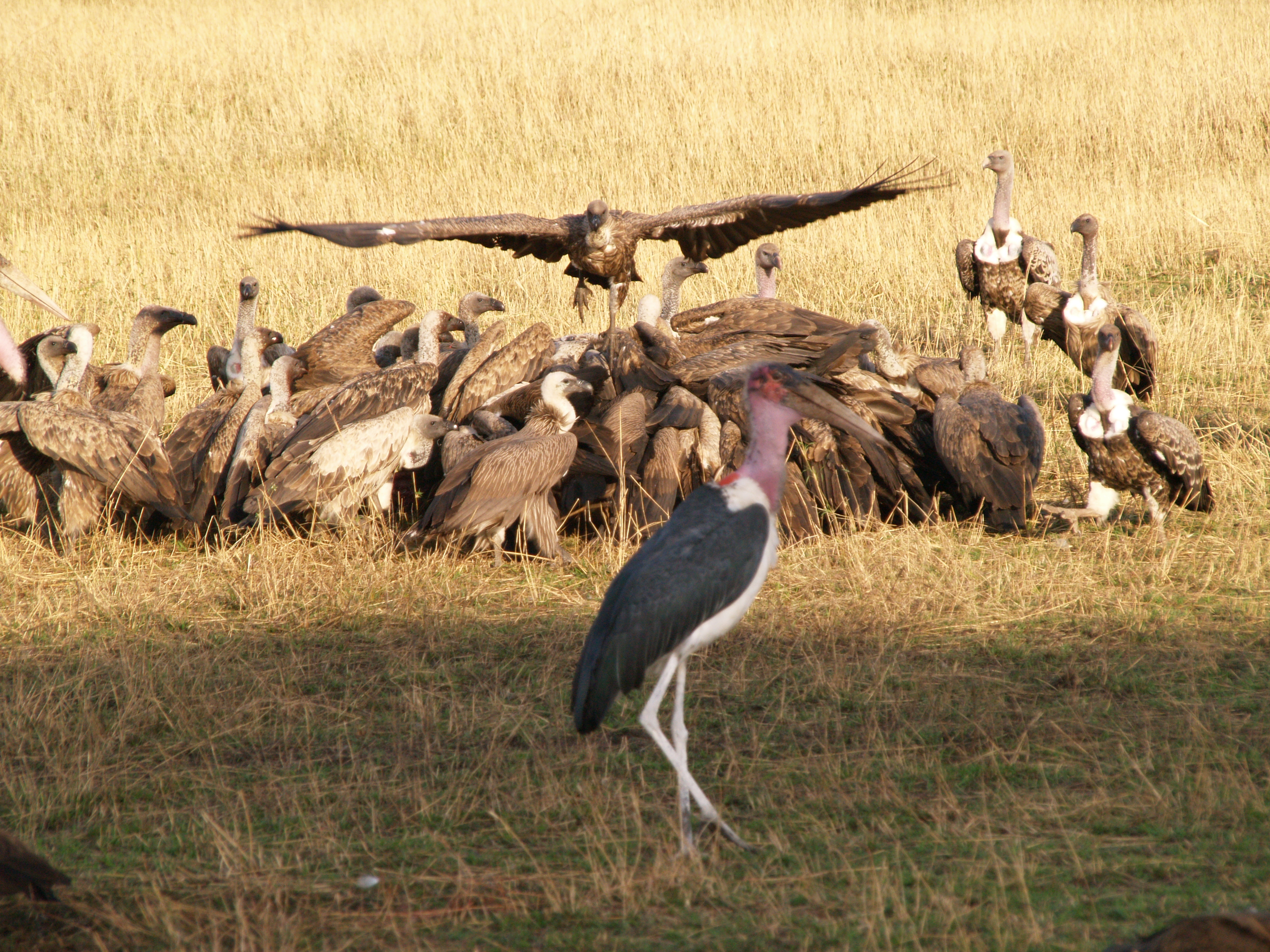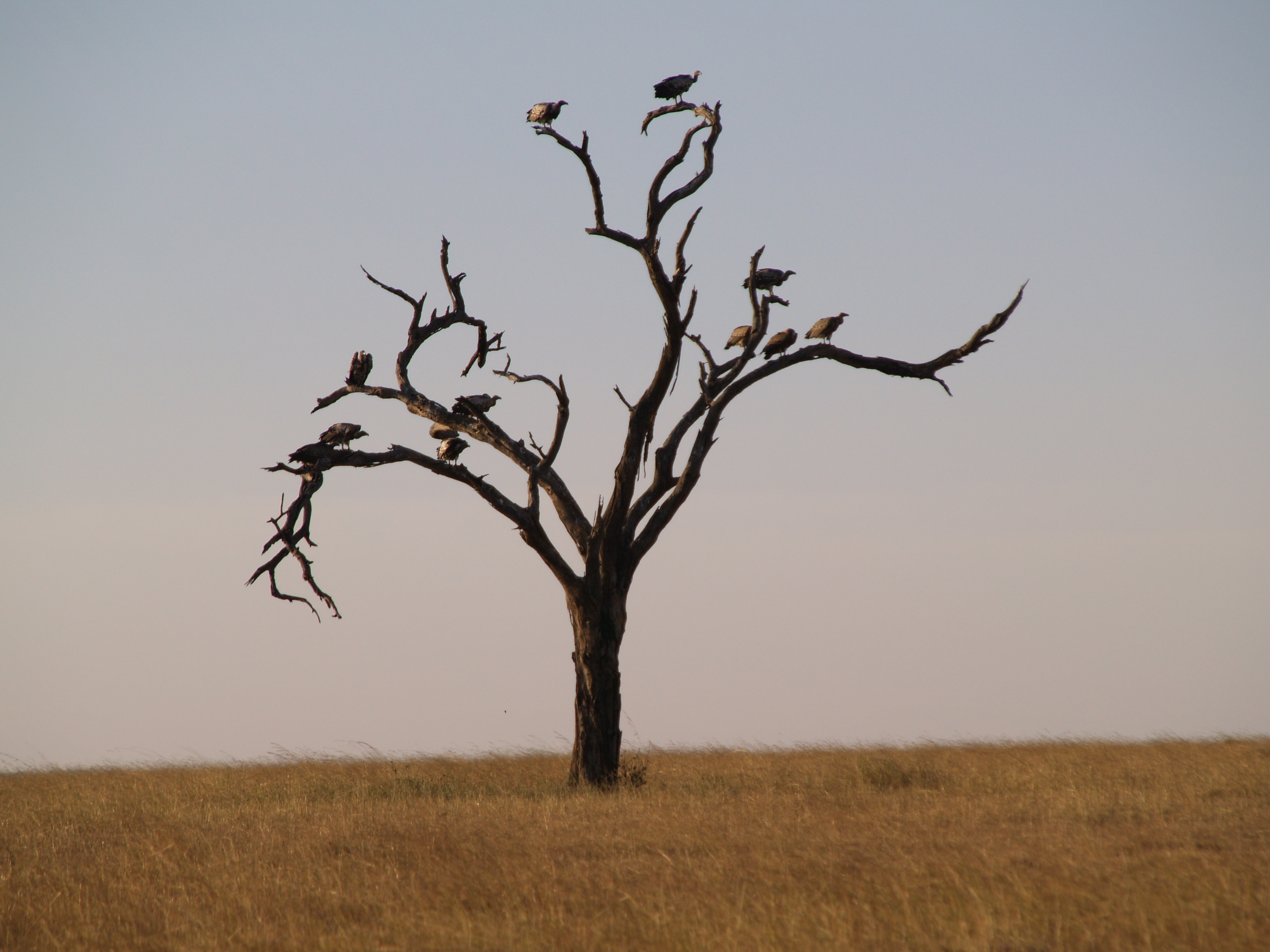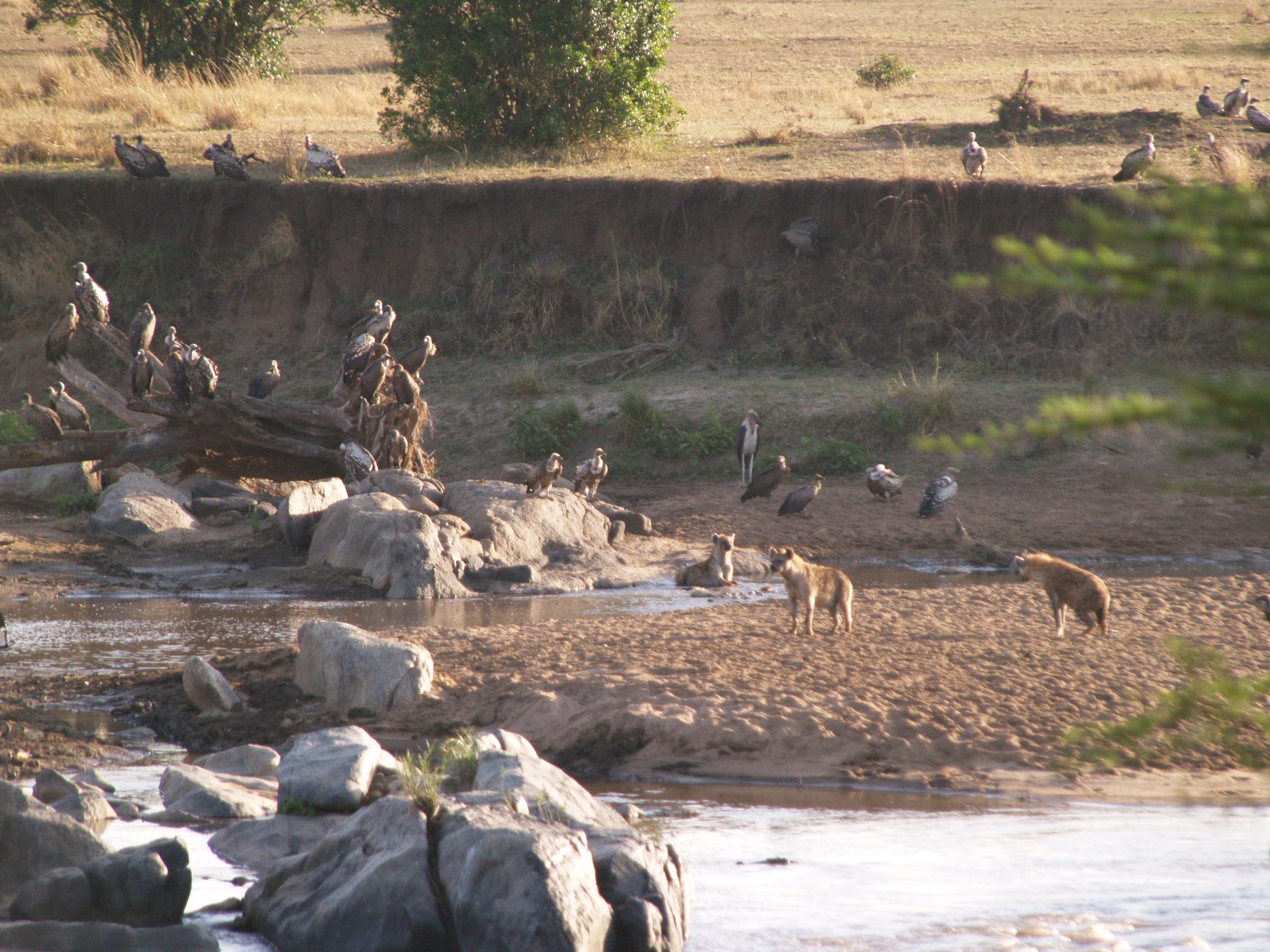The hyenas, jackals and vultures are the scavengers of the African plains. They do have an unjust reputation and really provide a vital role in “cleaning up” the savanna ecosystem. Without them there would be many animals piling up, dying from natural causes and disease , decomposing in the hot dry climate. The scavengers make all of this disappear.
The spotted hyena are famed scavengers and often eat the leftovers from other predators but they possess a great intelligence and skill for hunting. At least 50% of their food is hunted. They are closely related to cats even though they look like dogs. They live together in groups called clans that can include up to 80 individuals. They are led by females who are larger and who dominate over males. They are fast and can run long distances without tiring. There hunting tactic is to isolate a larger animal like a wildebeest from the herd and chase it over several miles at speeds up to 37 mph. Packs work together effectively to pursue it to the death. They often squabble over the spoils among themselves. There is a hierarchy within the clan, the highest ranking female gets first dibs on any kills. This makes her healthier, helps her live longer and allows her to reproduce more. Even the lowest ranking female dominant over the highest ranking males. The spotted hyena has large jaw muscles which gives it a powerful bone crushing bite. It eats everything, bones and all, nothing remains. It is able to digest just about anything completely. The spotted hyena is bold, aggressive and a fearless predator.
The jackal is smaller in size and part of the wolf and dog family. Generally found in pairs or small groups when hunting for food. They are very crafty mainly preying on the smaller animals in the antelope groups. They have sharp teeth and there physique gives them the ability to run for long-distance maintaining speeds of 10 miles mph for extending periods of time. The black-backed jackal found in the Serengeti is the most aggressive of the species, known to attack prey many times its own weight and size biting at it legs and loins and will frequently go for the throat. They will form small packs to scavenge the remains of kills left behind by larger predators.
Vultures are the true scavenger feeding almost exclusively on carcasses of the dead animals in the African plains. They are found in large, squabbling groups around carcasses after the cats, hyenas and jackals are done. They are known not to be good at flying because they are just to heavy. If it were not for the thermal currents, they would not be able to stay airborne for any length of time. They have very good eyesight and rely on watching other vultures to help find food. They play a key role in the plains ecosystem by consuming almost 70% of the dead animals preventing disease outbreaks and recycling the nutrients. Vultures stomach acid is exceptionally corrosive, allowing them to safely digest contaminated and toxic carcasses. As strange as it seems all of these scavengers play an important part in maintaining the delicate ecosystem.
The three vultures we saw are the Lappet-faced, are very common and one of the biggest. They are powerful and aggressive, tend to dominant over the other vultures. The White-headed one of the rarest know to be more shy and the hooded vulture one of the smallest.

